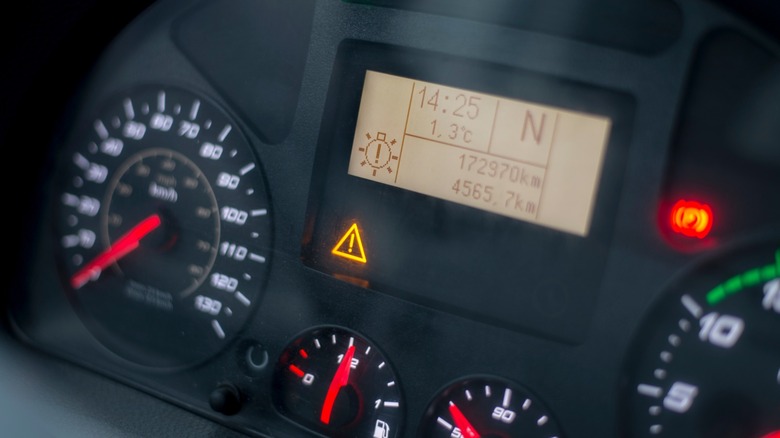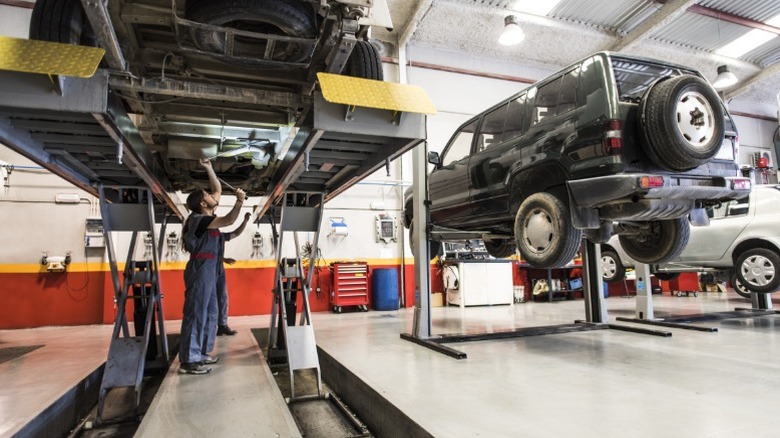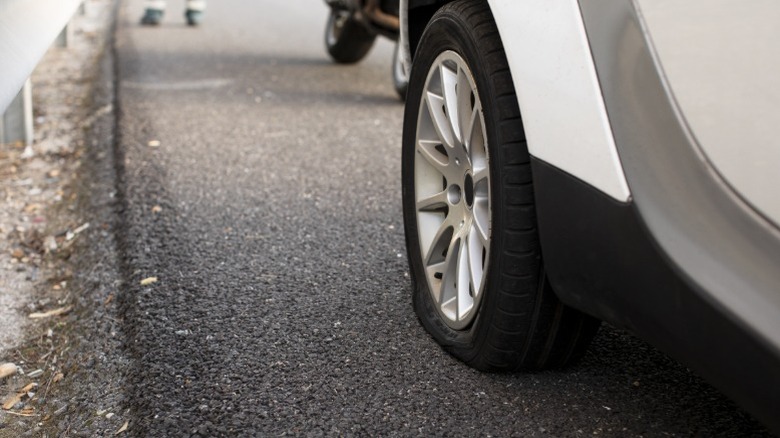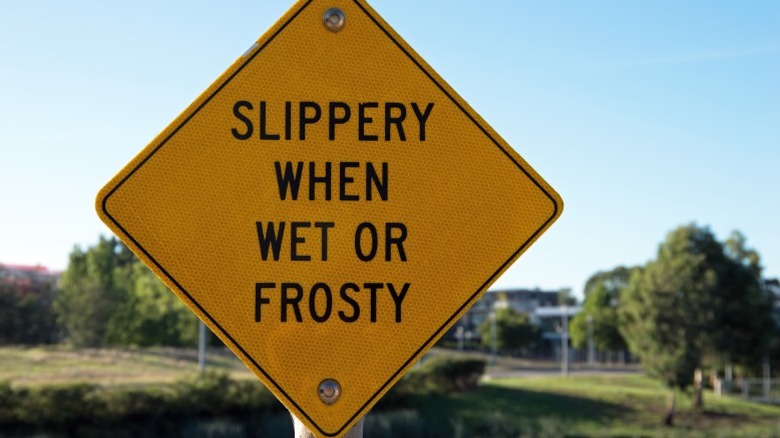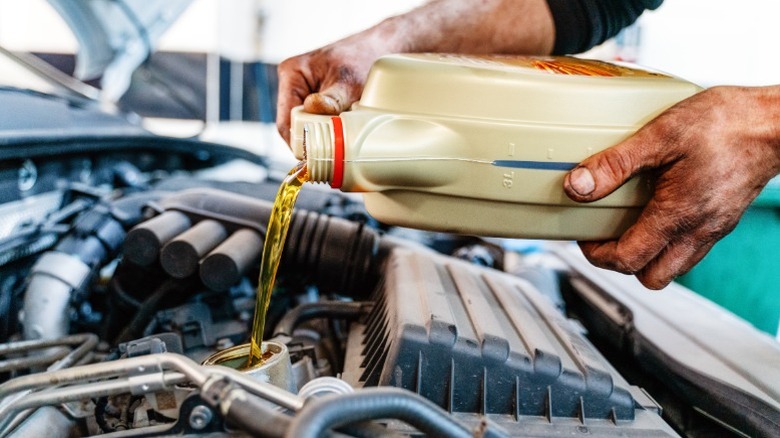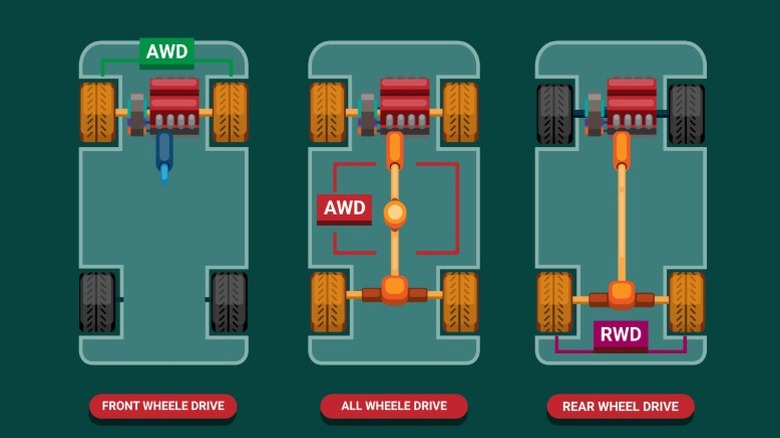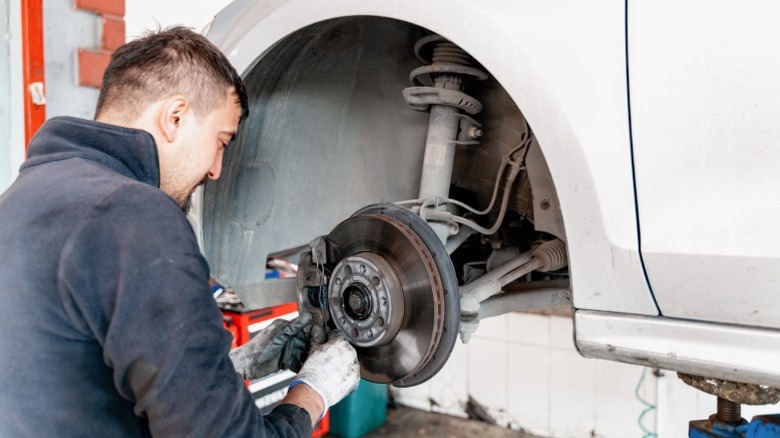What Does The Triangle Symbol Mean On Your Car's Dashboard
As a new driver, you must get used to the alerts and warning signs on your car's dashboard. The dashboard is your primary interface with your car. It's how your car lets you know how fast it's going, how much fuel is in its tank, what doors are open, and so on. Your car interprets these messages through symbols. One common dashboard signal is the triangle with an exclamation mark at the center.
This symbol is typically a warning or alert about some issue with your vehicle. This issue could range from a general warning to a more specific one. It could be general to indicate an engine issue, a brake system issue, or that fluid levels are running low. It could also be more specific to indicate low tire pressure, overheating engine, or low vehicle stability. Whatever the issue is, it is often a cause for concern, and interpreting it correctly would help you address the issue more effectively.
Here are some things the triangle symbol on your dashboard may indicate.
The Car is Due for Service
The triangle symbol could indicate that your car is due for a service. This is the most common reason for the symbol to show up on your dashboard. It is also often the go-to for mechanics when you report the signal. Every car needs regular maintenance to stay in top shape. This includes things like oil changes, battery inspection, and checking fluid levels. Ignoring these small but essential tasks can lead to bigger, more expensive problems down the road. So, when that triangle shows up, don't ignore it. You should service your car routinely to keep it in the best shape. But there are other ways to know for certain that your car is due for servicing, as you will be wrong to go off just the symbol alone.
Every car comes with a maintenance schedule that you must comply with. Your car even helps out with this. It has an onboard computer that records mileage and time since the last service. Once it calculates that it's time for maintenance, it flashes that triangle symbol. Some modern cars even give you a countdown of how many miles you have left before your next service appointment. To help you out, we've also covered some easy ways to keep track of your car's maintenance schedule so you're on top of everything.
Low Tire Pressure
Tire pressure is a big deal. You need to know your car's recommended vehicle tire pressure and check it frequently to stay safe. Not only does it determine your tire's life, it can determine yours, too. Driving on a highway with low tire pressure or a flat tire makes it difficult to control your car and can result in an accident.
To keep you safe, the triangle symbol on your car's dashboard will give you a heads-up if your tire pressure is low. On the other hand, some cars have a more specific tire pressure warning signal. This looks like a horseshoe with an exclamation mark. By the time your tire pressure warning light comes on, it will probably be too late, and you shouldn't drive the vehicle without fixing it. You can also check your tire pressure yourself. One way is to see if you notice a flat tire. Alternatively, you can use a tire pressure gauge to get an accurate reading.
Overheating Engine
In many ways, your car is just like your body system. Like your body, there are a couple of reasons that can cause your car to overheat. Unlike your body, you can't check a car engine's temperature with a thermometer; that's where the dashboard signal comes in. While your car already has a temperature gauge to track the engine's temperature, there's a chance you might not notice when it gets too hot. In this scenario, you'll likely realize the engine is overheating when you see smoke coming from the hood. Luckily, your car also alerts you through a warning sign — the triangle symbol.
The triangle symbol is our focus here. But, while the symbol popping up is to alert you, it is likely too late at that point to stop your car from overheating. That's why you should pay close attention to your car's temperature while driving so it doesn't reach that point. If your car's temperature gauge moves above the halfway mark and into the red zone, that's a sign of overheating. If your car's engine overheats, the first and perhaps most important thing is to pull over and turn off the engine. If you stay on the road, it can damage your engine and, in more severe cases, even cause a fire.
Traction Control Issues
Another problem that can trigger the triangle symbol is traction control issues. When it rains or snows, roads get wet and even icy, both of which can make them slippery because they reduce the friction between your tires and the road. Your car can also lose traction if your tires are worn out, all of which are pretty dangerous because poor traction means you may lose control of your car and cause an accident. Simply put, traction control keeps you stable while accelerating, so your car may alert you with the triangle symbol warning light when there's an issue with this tech.
The whole purpose of traction control is to prevent hydroplaning from occurring. So, when the warning lights come on, you'll need to slow down and avoid any sudden braking. With a malfunctioning traction control system, your car will have trouble staying stable on slick surfaces. If the roads are dry and the light stays on, you'll need to take it to the mechanic for a closer look.
Low Oil Pressure
Oil is to your car what water is to our bodies. That means your car can get dehydrated, too, which is called low oil pressure. Low oil pressure means your car's engine oil is too low, often giving off a red warning light. Engine oil is used to lubricate the many moving parts of your engine to prevent any unwanted friction. Without the lubrication engine oil provides, the metal parts of your car grinding against each other will generate more heat and can even get damaged. To alert you of this problem, the triangle warning light on your dashboard can come on.
Besides the obvious symbol, there are many ways to find out if your car's engine oil is running low. One is another dashboard signal – the infamous check engine light (CEL). Others include overheating, poor drive performance, and strange engine sounds when you start it or while it's running. Low oil pressure can result from a servicing need, a faulty oil pump, or a clogged oil filter, among other things. If that triangle lights up and you suspect low oil pressure, pull over and turn off the engine. You can check the oil level using the dipstick under the hood. If it's low, you might be able to add some oil to get back on the road temporarily. Do note that adding oil may only be a temporary solution and not a fix.
Faulty Anti-Locking Brake System
The triangle symbol could also indicate an issue with the anti-locking braking system (ABS). The ABS is crucial during emergency braking. The "Anti-Locking" part of ABS deals with the wheels. ABS's primary function is to stop your wheels from locking when braking so you maintain control over the vehicle.
In a way, the ABS and traction control are similar. Both systems serve the same purpose of retaining vehicular control in certain conditions, but they can be affected by a faulty wheel speed sensor and are needed when the road is slippery and slick. The ABS typically comes with its own warning signal, which is represented by the letters ABS in brackets. If you are driving and either or both of these alerts come on, you'll need to drive cautiously, avoid sudden braking, and leave some distance between you and the vehicles ahead. While the ABS signal doesn't mean your brakes won't work, you should check in with your mechanic as soon as possible.
AWD Warning
Another interpretation of the triangle symbol that has plenty to do with your car's traction and grip is the AWD warning. The symbol could signify that there is a problem with your drivetrain. AWD stands for all-wheel drive and is not to be confused with 4WD, which stands for four-wheel drive. It is a technology that allows power to be sent to all wheels of your car at once. This is as opposed to two-wheel drive cars that can only power two wheels simultaneously. In some models, the triangle symbol is also illuminated when there are problems with the all-wheel drive system. Usually, this information would be displayed on the car's information display, so you know this component needs to be checked.
A faulty AWD system can have varying consequences. It could be something minor, such as uneven tire sizes or a faulty sensor. It could also be a bigger issue, such as a problem with the transfer case that sends power to all four wheels. If the AWD warning signal lights up, you just need to drive safely. Your car will still function as usual but with reduced performance. So, gradually guide it to your destination, avoiding quick accelerations, sharp turns, or hard braking, particularly if the conditions are slippery.
Transmission Issues
The triangle symbol, the master warning light, may also be triggered by an issue with the transmission system. Typically, in such scenarios, you may have already noticed some symptoms from your car's performance. Some of these signs are reduced drive performance, difficulty switching gears, and malfunctioning gearbox. Some cars are infamous for their struggles with transmission. For others, however, it is not a common problem. If you experience this signal, don't put any extra burden on your transmission, which is easier done than said. Proceed with caution till you can get it fixed.
The most common cause of transmission issues is low or stale transmission fluid. Like oil, coolant, and water, transmission fluid is another vital serum you need to keep your car operating smoothly. It ensures the gearbox and similar components work optimally without any friction. To know how often you need to change your car's transmission fluid you need to change your car's transmission fluid, you should check its manual or maintenance schedule. Another cause of transmission issues is leaks. If you notice puddles of fluid underneath your car, then you may have a leak in your system.
Brake Problems
A warning signal that would certainly make anyone uneasy is the brake failure alert. If your car has issues with its brake, the triangle symbol may come on to draw your attention to it. A brake failure can be extremely dangerous, especially when moving at high speeds. Brake issues can happen for a variety of reasons. Should the brake failure warning signal come on while driving warning signal come on while driving, you need to slow down as gradually as possible until your car comes to a stop. Be sure to use your caution signal and avoid other vehicles or pedestrians.
One common problem that can trigger this warning is low brake fluid. Yes, another fluid your car requires. Brake fluid is essential to keep your brake working at optimum. And, your brakes working at optimum is essential to your drive performance and safety. If your car is low on brake fluid, your brakes may feel spongy or take longer to engage. Another common cause of brake problems is brake pad wear and tear. Brake pads need to be replaced regularly, as you'd find in the manual or maintenance schedule. Be sure you choose the right brake pad when replacing them, as there are different types of brake pads and materials, each with its own unique benefits.
Vehicle Stability Assist Malfunction (For Honda Models)
To round up the list, one triangle symbol meaning that is peculiar to a particular brand of cars is vehicle stability assist malfunction. The symbol will light up when the Vehicle Stability Assist (VSA) system malfunctions in Honda models. The VSA system is built to ensure control and stability when you drive the vehicle. This feature is particularly useful when navigating hazardous conditions. That's right, the VSA is Honda's version of traction control. If you drive a Honda and notice the triangle signal lighting up your dashboard, it might point to a problem with it.
The causes and responses to this are very similar other vehicles. The most common VSA issue is a faulty wheel speed sensor. The VSA also monitors the lateral G-force and steering angles to keep your vehicle as stable as possible. If you also have low brake fluid, this could trigger the warning. The best way to deal with it if it occurs during a drive is to reduce your speed and avoid any sudden braking. Be sure, however, to visit your Honda mechanic or Autoshop to get it properly checked out before you put the car on the road again.
